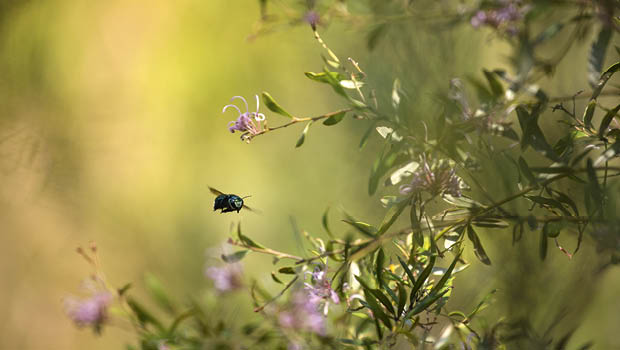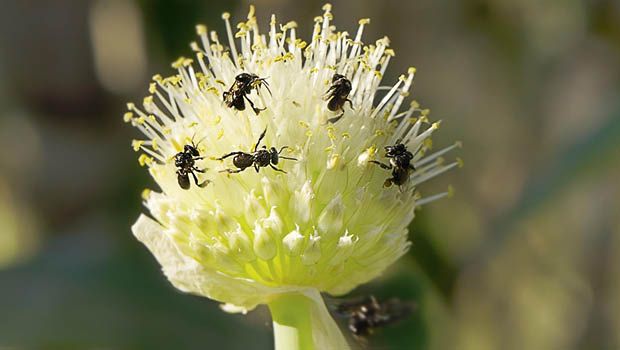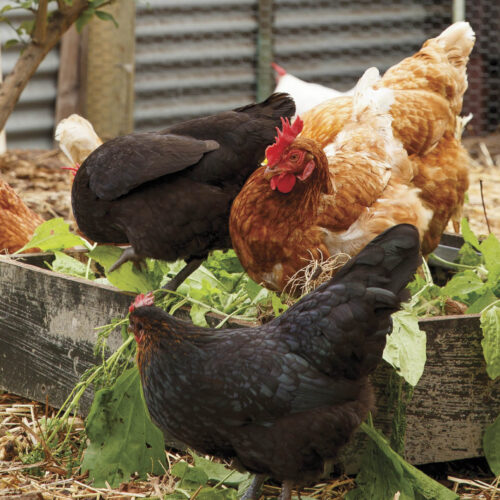Get the native bee buzz
2020-07-29T04:25:59+10:00
Explore the world of native bees and how we can help provide food for them. A good starting point is to see what you can plant in your garden that will attract them to your patch.
You can help the native bees of your area by making your garden more attractive to them with desired food, roosting and nesting spots, and water. Also, grow a variety of flowering plants so that pollen and nectar is available throughout the year. Planting bushes with nectar-bearing flowers in clumps will maximise their attractiveness. Also, go for a variety of nesting sites, such as uncovered earth, dense shrubbery and dead tree branches. A dish of water is also a must, but put some pebbles or marbles in the dish to prevent birds emptying it.
Bee-attracting plants
This list is not exhaustive and mostly suits ‘generalist bees’ that feed on more than one type of plant. Some native bees have specific requirements. For example, native bees of the genus Trichocolletes mostly visit native pea flowers (Fabaceae). If you want to attract a wider variety of bees to your garden find out which species occur in your area, and grow local native plants to suit them.
Natives
Daisies
Eucalypts, gum trees
Pincushion hakea
Happy wanderer
Grevilleas
Tea-tree
Honey myrtles
Thryptomene
Coastal rosemary
Exotics
Abelia x grandiflora
African daisy
Butterfly bush (Buddleja) *
Catmint (Nepeta x faassenii cultivars)
Oregano
Salvias (are loved by bees)
*Be careful to deadhead this as it can be an environmental weed.

We love bees at OG and so have quite a few articles about how we can help them:
How to get the native bee buzz — just add bees!
For more gardening tips and ideas get the latest issue of ABC Organic Gardener Magazine here.






